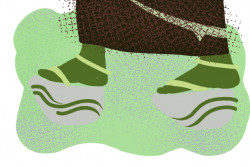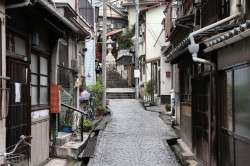
February 27, 2015
The Unexpected Joys of Kyushoku
How Japan made me love school lunch
During my senior year of high school, my dear father packed lunch for me every single day. It was always either a turkey and cheese sandwich with spicy brown mustard, or leftovers from dinner the night before. Most importantly, there was always a small piece of dessert wrapped in tin foil.
I think my dad indulged me for so long because he recognized the importance of instilling good eating habits and the rituals surrounding it. He was on to something—and probably would’ve fit in quite well in Japan.
Kyushoku, or Japanese school lunch, shames American school lunch in so many ways. It’s quickly become one of my favorite perks of being an English teacher here. The meal itself isn’t much more complex than what my dad packed: A small vegetable, rice or bread, and a main with a bit of meat or tofu. And while I really have grown to enjoy the simple yet tasty fare, the benefits of kyushoku stretch far beyond the actual grub.
The first joy is simple: From a teacher’s perspective, kyushoku is adorable. There are no lunch ladies. Instead, students dressed in white aprons and classic white chef hats serve each other meticulously measured portions from large pots. Even the boys who are too-cool-for-school suit up without complaint, assisting each other in tying their aprons and straightening their hats with all the pride and dignity of a groomsman helping his oldest friend into his wedding tuxedo. The students cheerfully carry out these tasks to the sound of music played over the intercom. My school is partial to classical and Disney tunes. Oddly, Flight of the Bumblebee is a crowd-pleaser.
The second joy is more personal. The simplicity of kyushoku reminds me of the uncomplicated and wonderful time of childhood. In the lunchboxes my dad packed me, I always knew I would find one of two hearty and wholesome options. The same is true of kyushoku. There’s just enough variety to maintain a small amount of mystery and anticipation, but enough consistency for kyushoku to always feel familiar.
Above all, the greatest benefit of kyushoku is that it reinforces a sense of community. From start to finish, kyushoku is done together. Mildly terrified of the jungle-like cafeteria at my high school, I used to bring my lunchbox to an empty classroom and eat there. Here, there is no dreaded cafeteria. Instead, teachers and students arrange the desks in a circle and eat together, talking and joking as a group. Not only does this break teacher-student barriers, so common in the U.S., but it inadvertently teaches students how to hold a casual yet substantial conversation with an adult, complete with eye contact and poise—skills many of my intensely shy students do not seem to possess.
There are few times I’m more aware of my blubbering and gluttonous Americanism than during kyushoku. I drop or accidentally fling a chopstick almost every day. At first, I balked at the portions. Whereas my supervisor takes home her milk and half her rice every day because she can’t finish them, I occasionally finish some of the students’ food for them. One of the most glaring differences between American and Japanese school lunch is that kyushoku generates exactly zero waste. We scrape clean the reusable serving pots, dishes and milk bottles, and food waste is nonexistent. The American trashcans brimming with half-eaten cheese-sticks and packages of donuts are literally and figuratively half a world away.
But more than my gluttony and clumsiness, the responsible and selfless behavior of the students during kyushoku is what makes me most aware of the differences between Japanese and American school lunch. Just as kyushoku begins with the students serving themselves and each other, so it ends. Kyushoku seamlessly transitions into Cleaning Time. Just as there are no lunch ladies, there are no custodians. Instead, both the students and teachers spend 15 minutes each day cleaning the classroom together. In my school, the students go so far as to nominate an “MVP” of cleaning time. It’s a light-hearted, important and downright cute way to instill a sense of personal responsibility in the students.
The only thing about kyushoku that I don’t like? No dessert. While Japan may have helped me learn to love school lunch, I’d still let my dad pack my lunchbox any day. But instead of eating it in an empty classroom, I’d proudly don chef’s whites, sit in a circle chatting with students and teachers against a background of Flight of the Bumblebee, clean up afterwards, and leave school lunch far more contented than ever before.







